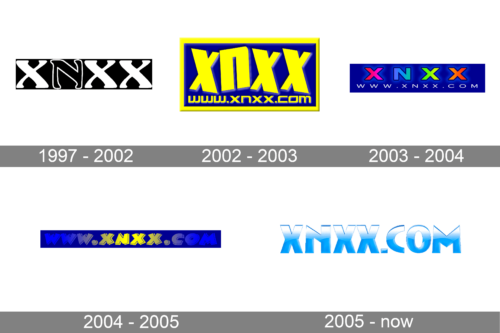
- Version
- Download 181
- File Size 14.95 KB
- File Count 1
- Create Date December 3, 2024
- Last Updated December 3, 2024
Amazon, the colossal American tech giant, was founded in 1994 by Jeff Bezos under the name "Cadabra." Initially specializing in e-commerce and artificial intelligence, Amazon expanded into cloud computing, online services, and a wide array of other cutting-edge technologies. From selling books in its early days, Amazon has grown into a massive global marketplace, offering an endless variety of goods across numerous categories. Known for its legendary, minimalist logo—a simple wordmark with a signature arrow beneath—it has become an instantly recognizable symbol of the brand's identity.
The Origins of the Amazon Brand
The company, initially named "Cadabra," was renamed to "Amazon" in the same year it was founded. The first version of Amazon's logo appeared in 1995, marking the start of a brand that would soon become synonymous with online shopping. Throughout its evolution, Amazon's logo has remained minimalist, reflecting Jeff Bezos' desire to keep the branding simple and cost-effective without compromising its global recognition. The color palette was finalized in 1998, and though there have been a few iterations, the logo has mostly maintained a consistent design.
Amazon: A Global Marketplace for All
Amazon is widely regarded as the world's largest online marketplace, providing not only Amazon-branded products but also items from both large and small retailers. The platform is known for its vast assortment and efficient customer service, making it the go-to destination for millions of shoppers worldwide.
Logo Evolution: A Journey of Simple Elegance
1995 – 1997: The First Version
The original Amazon logo, designed by Turner Duckworth in 1995, featured a bold, stylized "A" with a smooth vertical line running through it, symbolizing the Amazon River. The wordmark "amazon.com" was placed below the emblem in lowercase letters, executed in a simple sans-serif typeface in black. The design was symbolic and elegant, with a clean and timeless feel.
1997: Refining the Design
In 1997, Amazon's logo was updated with new horizontal lines emerging from the "Amazon River" shape. This modification not only emphasized the river’s flow but also introduced subtle references to nature, like tree-like patterns, adding a fresh dynamic to the design. The monochrome color scheme remained, but the wordmark was bolded, and the emblem was resized to appear more refined and compact.
1998: A Year of Change
1998 was a pivotal year for Amazon's visual identity. The company introduced three different logos in that year. The first was a straightforward wordmark, "amazon.com," using a serif typeface with a tagline, "Earth’s Biggest Bookstore." The second design incorporated the newly chosen color palette—black and vibrant yellow—with the letters capitalized and the "O" enlarged. The tagline was dropped in this version, giving the logo a sleeker look.
1998 – 2000: The Swish Era
At the end of 1998, Amazon unveiled the now-iconic "Swish" logo. The lowercase wordmark was accompanied by a bright yellow line that arched upward beneath the text, creating a bridge-like association. This simple yet fresh design gave the logo a more contemporary and dynamic feel, reflecting Amazon's growing technological influence. The Officina Sans typeface was used for the wordmark, with "Amazon" in bold and "com" in a lighter weight.
2000 – 2024: The Iconic Smile-Arrow Logo
The Amazon logo received its most significant redesign in 2000, introducing the "smile" arrow that has become synonymous with the brand. This version featured the lowercase "Amazon" in black, with a smooth yellow arrow stretching from the "A" to the "Z," symbolizing a smile. The arrow's design also cleverly conveyed the idea that customers could find anything on Amazon, from "A to Z." While the ".com" part was initially included in the logo, it was eventually removed as Amazon expanded into physical retail and other sectors.
The logo’s simplicity, paired with the playful smile-arrow, conveyed a sense of reliability and happiness. The use of black and orange added warmth and friendliness to the brand, making it approachable yet professional. This logo design has been the foundation of Amazon’s identity for nearly two decades.
2024 – Today: A Brighter, Stronger Symbol
In 2024, Amazon introduced a subtle but impactful update to its logo. The shade of orange for the smile-arrow became deeper and more intense, creating a stronger and friendlier mood while maintaining the logo's familiar structure. The black lowercase wordmark remained unchanged, preserving the timeless elegance of the design.
The Iconic Smile and Its Meaning
The Amazon icon is widely regarded as one of the most recognizable logos globally. The combination of a lowercase "A" and a curved orange arrow beneath it forms a smile, conveying warmth, friendliness, and customer satisfaction. This simple, yet effective design was an intentional move by Jeff Bezos, who wanted the brand to feel approachable and customer-centric. The smile symbol was even used creatively on Amazon’s packaging, where the arrow became a "smile" that greeted customers upon delivery. This clever marketing strategy helped further solidify Amazon’s identity as a friendly and reliable service provider.
The arrow also has multiple meanings: it symbolizes the delivery of goods to customers, the journey of discovery on the platform, and Amazon’s constant forward motion in the world of technology and e-commerce. It embodies Amazon's philosophy of continuous growth and innovation, ensuring that the company remains at the forefront of the e-commerce and tech industries.
Amazon’s Visual Identity: Shape and Colors
The Amazon logo uses a simple yet powerful design structure that includes the company’s web address and the famous arrow from "A to Z," a subtle nod to the wide variety of products Amazon offers. The combination of a sleek black wordmark with a bright orange arrow creates a balanced, professional, yet friendly look. The logo has remained effective because of its clarity and ability to convey the brand's core values—reliability, innovation, and customer satisfaction.
Font and Typographic Design
The font used in the Amazon logo is a custom sans-serif typeface that was designed for the company. The font, similar to Officina Sans Bold, features smooth, thick lines and slightly curved tails on the "A"s, which give the logo a playful yet professional vibe. The letter "Z" is particularly distinctive, with its bottom bar arched to embrace the arrow, symbolizing the harmonious relationship between the company's name and its iconic symbol.
Hidden Meanings in the Amazon Logo
The Amazon logo has two hidden meanings that reinforce its message. First, the curved arrow under the wordmark forms a friendly smile, which highlights the company’s commitment to customer satisfaction. Secondly, the arrow connects the "A" and "Z" of the wordmark, symbolizing Amazon's vast range of products, available from A to Z.
Trademark Status and Legal Considerations
The Amazon logo, along with all its related icons and trademarks, is protected by law. To use the Amazon logo for any commercial purpose, permission must be obtained from the company.
The Power of the Combination Mark
The Amazon logo is an example of a successful "combination mark," which merges both a wordmark and a graphical element. Experts often argue that combination marks are one of the most effective types of logos, and Amazon’s logo exemplifies this idea. By combining the simple wordmark with the iconic smile-arrow, Amazon’s logo not only stands out but also conveys the company’s values and mission in a memorable, easily recognizable way.
| File | Action |
|---|---|
| Amazon Logo.png | Download |








